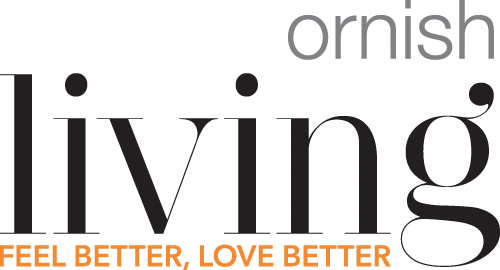
The Neuroscience of “We”: How Enhancing Our Connections Can Heal Us
Happy business team applauding together
“In the ignited space of our deepest suffering, in the release of our deepest fears, in the familiar peace of our deepest joys, we are each other. -Archbishop Desmond Tutu
When I recently asked my five-year-old neighbor what Valentine’s Day is for, she did not hesitate. Her wide-eyed response was, “We make heart cookies and say I love you and hug each other, especially old people.” Thinking that I would most certainly, from her viewpoint, be included in that category of ‘old people,’ I asked her why she felt old people in particular needed hugs. Like any good sociologist her age would observe, she answered, “Because it makes them smile. Then they’ll play with me.”
We can change, grow and even thrive, in spite of terrible childhoods and ongoing life difficulties
Science is now verifying what my young-yet-wise-past-her-years neighbor seems to know innately. We need each other. We affect and influence each other. It’s our connections of love, empathy and understanding that heal us individually and collectively.
The Me-We Connection
Archbishop Desmond Tutu illuminates the imperative of our interdependence in his book Believe. He writes: “A person is a person through other people, a concept captured perfectly by the phrase Me-We. No one comes into the world fully formed. We would not know how to think or walk or speak or behave unless we learned it from our fellow human beings. The solitary, isolated human being is a contradiction in terms.”
Tutu’s observation about the importance of human connection has been extensively studied by psychiatrists and neuroscientists. For four decades Dr. George E. Vaillant, a research psychiatrist and a pioneer in the study of adult development, directed the Harvard Grant Study. It is the longest longitudinal study of biosocial human development and is still ongoing. By closely following research subjects over many decades of their lives, the study’s goal has been to identify the key factors to a happy and healthy life..
The Grant study has found that nurture trumps nature. In his book, Triumphs of Experience, Vaillant identified two of the most important lessons learned from the study. His findings may encourage and inspire, but not surprise you. One is that happiness is love. The other is that people really can change and grow and even thrive, in spite of terrible childhoods and ongoing life difficulties. He found that increasing our empathy for self and others, and also the ability to reciprocally participate in close, warm relationships were most highly correlated with strong mental, emotional and physical health. Vaillant concluded, “Happiness is the cart; love is the horse. The two pillars of happiness and health revealed by the Grant Study are love and a mature coping style that does not push love away.”
The Neurobiology of We
If love and connection are the key to our health and happiness, then the question becomes how do our brains behave in relationship with one another and how do we enhance these connections?
Dr. Daniel J. Siegel, a clinical professor of psychiatry at UCLA School of Medicine, is exploring the answers through teaching a new model of human connection that he refers to as the interpersonal mind/body-relationship connection, or the Neurobiology of We.
Using two decades of scientific research, he explains how our experiences with others shape our minds and can foster our well-being. Siegel found that where we place our attention and what we focus on actually shapes the structure of our brains. Relationships that are based in reciprocal warmth and connection, for example, create a state of integration in the brain that results in increased compassion, kindness and resilience.
In his book, Mindsight: the New Science of Personal Transformation, Siegel writes, “A receptive state turns on the social engagement system that connects us to others. Receptivity is our experience of being safe and seen; reactivity is our fight-flight-freeze survival reflex.” He explains that our nervous system has two modes – firing up and quieting down. When we’re fired up and reactive, we’re unable to open up to another. But when we feel calmer, we become receptive. In this receptive state, the muscles of the face, as well as the vocal chords relax, our blood pressure and heart rate normalizes.
Siegel defines relationships as “the flow of energy and information between people.” He also reminds us that relationships are never static. They involve ongoing exchanges of energy to help each party continue to change, adapt and grow both individually and together. As we do this, we shift and re-shape each other’s brains.
The Role of Mirror Neurons
The ability to instinctively and immediately understand what another is experiencing is the result of mirror neurons. Our brains fire them in reaction to another’s actions and the neurons “mirror” the behavior of the other. They allow us to resonate, imitate and deeply connect with that person’s internal state. One example is when you see someone about to slip and fall and you flinch in sympathy. Or when you see someone smile, your mirror neurons for smiling fire up and make you experience the same feelings associated with smiling.
Siegel writes, “Mirror neurons simulate the other within ourselves creating an interdependent sense of “self.”” It’s how we can be both an “I” and part of an “us.” It is this integration that promotes social and emotional intimacy and counters isolation and loneliness. Without this mirroring and integration we can become prisoners of our own stuck behavioral patterns of narcissism, obsession, greed and addiction.
Research has proven that the brain never stops growing in response to our experiences. Turning toward each other with openness, curiosity, respect and empathy rather than pushing each other away with fear, suspicion, judgment and avoidance, can form the foundation of our me-we connection of health, harmony and togetherness. Dr. Siegel encourages, “It’s never too late to stimulate the growth of neural fibers in the brain that promote the flourishing of our health and our intimate relationships.”
Compassionately and receptively tuning into ourselves and others will require patience, dedication, effort and ongoing, sustained practice. As we learn how to do this, life can become an intimate dance of living, loving and learning together.
Connection is a Learnable Skill
When we find ourselves in upsetting times of discord and division, our tendency is to separate and isolate ourselves from others. In the short term, this reflexive instinct can be self-protective and self-preserving. But when isolation continues overtime, our mental, emotional, physical, social and spiritual well-being is impaired and debilitated.
In 1972, Dr. Robert McNeish, a science teacher from Baltimore, wrote down his observations of the vital integration, coordination and cohesion that we can learn and apply to all of our relationships, simply by watching a flock of geese. Over the past 45 years, his timeless, inspiring observations have been told again and again.
He referred it as Lessons from the Geese:
*He noted that by flying in a V formation, the whole flock adds 71% more flying range than if each bird flew solo.
The lesson: We travel through life easier, sweeter and more effectively when we travel together, connected and lifted under the thrust of one another’s efforts.
*When the lead goose gets tired, it rotates to the back and another goose takes over the lead.
The lesson: Our interdependence supports us individually and collectively.
*The geese honk from behind to encourage those up front to keep going.
The lesson: Voicing and extending our empathy and care for each other promotes compassion, encouragement, vitality and connection.
*When a goose gets wounded or sick, two geese drop out of formation, follow it down and stay close beside it until it can fly again or dies. Only then will they launch out together to join another flock.
The lesson: We need one another. We need never go through life alone. Together, we’re better.
Valentine’s Day is Every Day
The vision of a child, the wisdom of a humanitarian, the scientific understanding of how we connect, and the lessons of the geese all point us in the same heart-healing direction. Valentine’s Day can be every day, when we remember to practice our love-promoting skills of understanding, joining others and bringing people together.
How has your life been changed for the better by joining with others?






